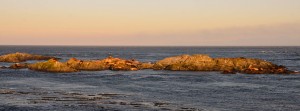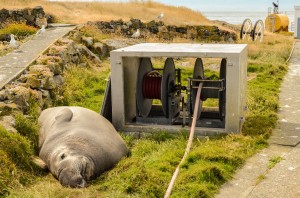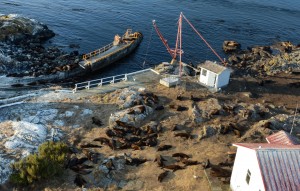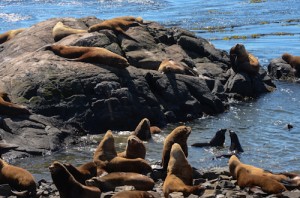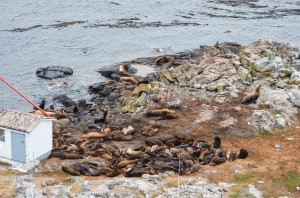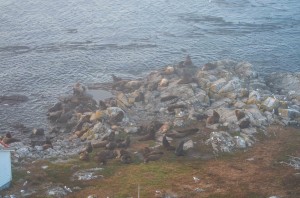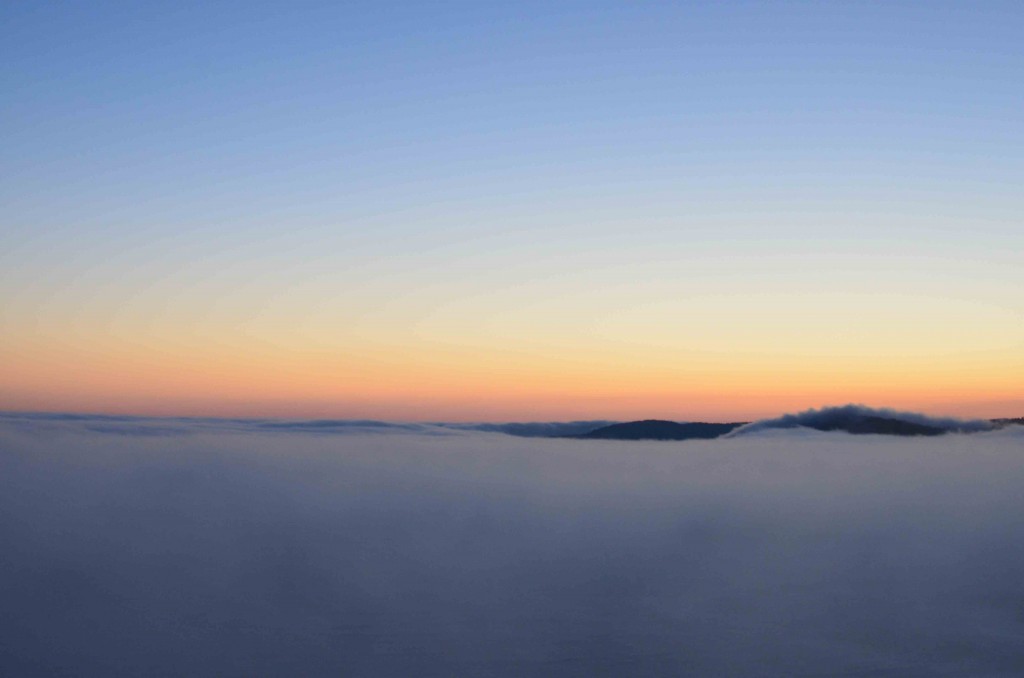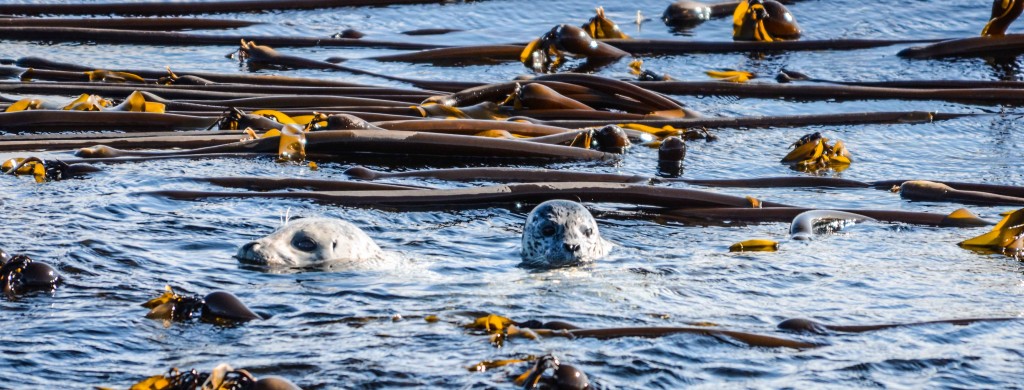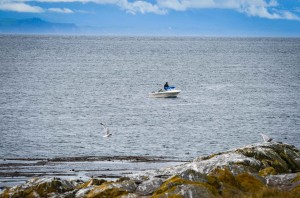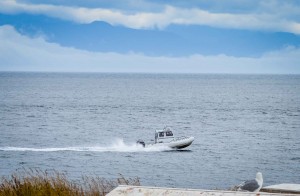Mike left last week and I will be taking over for the next two months. My last shift was a year ago and it’s great to see how well Mike and Alex have taken care of the place.
Over the past number of days, Misery and Chunk have been pretty subdued with the exception of Thursday when both headed into the water and had a 6-hour long feud. There are no females on the island so my assumption is that Chunk is testing Misery’s role as alpha-male (which he’s proven to be in check).
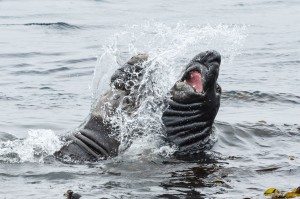
The two contenders: Misery and Chunk

Sea lion near the jetty during sunset
The first sea lion of the summer has been hanging around on the main island and the southern rock.
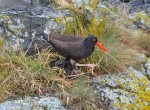
Oystercatcher with 3 chicks
Another first of the season are the newly hatched oystercatchers, pictured right. This nest is on the north side of the island and there is another on the south side that still has its 3 eggs intact.
For boat traffic, there averages 10-20 vessels per day in the reserve (weather depending). In the photo below, the gathered whale-watching boats to the west of Race Rocks implies a whale-sighting although it was too far for any good views from the island itself.

Whale watching vessels to the west of the island
Another note on boat traffic, this morning four curious boaters from Pedder Bay Marina wanted to explore the island unaware it’s not for public use. I explained the rules of the reserve and sent the apologetic boaters on their way. Pam Birley took some snapshots on Camera 1.




